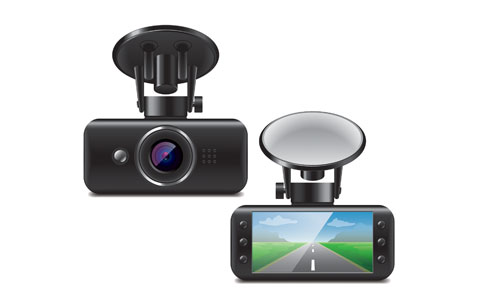Risk Factors in Serious Truck Crashes


Many factors can contribute to a serious truck crash, and the circumstances surrounding each one can be unique. However, common risk factors play a role in many of these crashes. By recognizing and addressing them, company owners and managers can help reduce the risk of serious crashes.
Inexperience. Safely driving a large commercial vehicle requires considerable skill and good judgment that tends to evolve and improve with years of driving experience. For this reason, hiring drivers who have at least two years of recent truck driving experience is widely considered an industry best practice. It also is important to ensure drivers are familiar with the equipment they are using and the type of cargo they are transporting.
Driver turnover. Even for experienced drivers, changing jobs can mean operating unfamiliar equipment, driving to unfamiliar locations, handling new types of cargo and being uncertain about job expectations. These changes can cause drivers to be distracted and increase their crash risk. For this reason, high driver turnover can contribute to crash risk. Hiring experienced, qualified, committed drivers, and keeping them, is important. Conducting thorough interviews and pre-hire evaluations, hiring employees with stable work records, and who are able to cope with the challenges of the job, are important steps. Addressing aggravating factors that may lead drivers to quit can help increase workplace satisfaction and driver retention. Offering competitive wages and benefits is important to help attract and retain good employees. How drivers are treated, management recognition for good performance, incentive programs that reward drivers for years of service and accident-free driving, and opportunities for advancement are other strategies that can help improve retention.
Risk-taking behavior. For new job candidates, owners and managers should look carefully at information received from previous employers and motor vehicle records (MVR) during the screening and selection process. Multiple moving violations and accidents may indicate that a candidate is prone to risk-taking. A personal interview and road test can help provide a glimpse of the driver's attitude toward safety and temperament behind the wheel. Interviews should include open-ended questions designed to explore a driver's tendency to take risks. The Federal Motor Carrier Safety Administration’s Pre-Employment Screening Program (PSP) can help provide additional information about a candidate’s past work record, DOT inspection violations and crashes that may not appear on the employment application or MVR.
For current employees, it’s important to check motor vehicle records at least annually for violation and accidents. DOT inspection records can provide additional information about violations that may not appear on MVRs. Many of today’s onboard safety monitoring systems (telematics) can provide detailed information about vehicle and driver performance. These systems can help managers evaluate driver performance and determine the right kind of feedback and coaching to help address risk-taking behaviors before they lead to crashes.
Speed. Driving too fast for road, weather and traffic conditions is a factor in many serious truck crashes. Pressure to meet delivery deadlines, or a driver's desire to maximize pay through increased mileage or commission, are some of the motivators to speed. Fleet managers are in a position to help control these factors by monitoring productivity. Drivers should not be pressured to rush to their next delivery by driving beyond legal speed limits or too fast for conditions. Other manager oversight to consider include, monitoring dispatch records, driver logs and vehicle mileage reports to help ensure drivers are being dispatched in a manner that does not jeopardize safety or violate Department of Transportation hours-of-service regulations. It’s also a good practice, and a commercial vehicle rule, to review motor vehicle records at least annually to verify drivers are operating safely. Citations for speeding and driving too fast for conditions may reveal a disregard for speed limits and reasonable safety precautions. Companies can also help control speeding by implementing and enforcing formal company speed policies. Speed governors can be used to control a vehicle's top speed. Driver performance data from onboard safety monitoring devices can help identify vehicles that are being operated unsafely.
Following distance. Rear-end accidents are often associated with poor space management. One way to help reduce the risk of rear-end collisions is to provide training so drivers understand the need to maintain a safe following distance. Monitoring driver performance is also important. Drivers who have received moving violations and motorist complaints for following too closely should be counseled. Driver performance data from onboard safety monitoring systems, such as hard braking events, can help identify drivers who are following too close.
Distraction. Distraction is a common cause of crashes for all types of vehicles. Companies can help prevent distraction-related crashes by creating and enforcing clear policies that prohibit drivers from engaging in distracting activities while driving, such as using mobile devices to call or text, eating or reading.
Fatigue. Lack of sleep can impair a driver's judgment and reaction time. In fact, some fatigue studies suggest that drivers who have been without sleep for 24 hours are as impaired as drivers who are intoxicated.1 This diminished ability to recognize hazards and react quickly can lead to serious crashes. Companies should take steps to help ensure drivers do not operate beyond their capabilities or legal limits. By monitoring productivity and dispatching drivers in a manner that allows them to get quality sleep, companies can help ensure drivers are prepared to drive safely. Fatigue management is also a good topic for safety meetings and driver training programs.
Vehicle design. Vehicle characteristics can play a role in crashes. For example, blind spots can contribute to lane-change crashes. Hood-mounted convex mirrors can help alleviate these blind spots. Purchasing tractors with sloped-down hoods, low-profile door frames, and passenger-side blind spot view windows can also improve the driver's view. Increasing visibility also can help prevent serious accidents. Daytime running lights make vehicles more noticeable to oncoming motorists, especially on two-lane highways. Mid-trailer turn signals can help alert motorists before a driver turns or changes lanes. Installing LED lights can increase turn signal visibility. Replacing worn or defective reflective trailer striping can help prevent nighttime rear- or side-impact collision.
A variety of collision avoidance technologies are available to help drivers avoid accidents, including, for example, electronic stability control, roll stability control, forward collision warning, automatic emergency braking, lane departure warning and more. As prices gradually come within reach, these devices are becoming viable even for small to medium-sized fleets. The increasing cost of accidents continues to provide an incentive to consider utilizing these technologies.
Source
1 Moderate sleep deprivation produces impairments in cognitive and motor performance equivalent to legally prescribed levels of alcohol intoxication, University of New South Wales School of Psychology, 2000.
DOC#: LCT742




